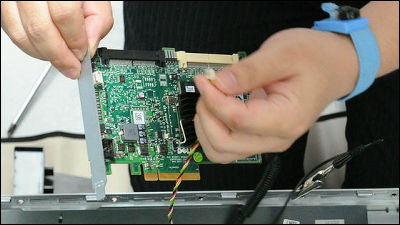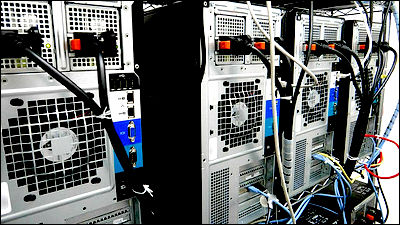A fierce man who tampered with the circuit and avoided the 'AC adapter identification function' of the laptop computer 10 years ago appears by himself

One of the advantages of notebook PCs is that they can be used in places where power cannot be secured due to the built-in battery. However, there are times when problems occur with older models, and you may not be able to take advantage of them. In the blog of '
Hardware fix for Dell “AC power adapter could not be determined” – project-insanity.org
https://blog.project-insanity.org/2020/05/25/hardware-fix-for-dell-ac-power-adapter-could-not-be-determined/
Mr. onny who posted the article has been using Dell's notebook PC ' Latitude E6410 ' released in 2010, but he said that he could not charge with the AC adapter for several months. When I tried using another manufacturer's AC adapter, I was able to supply power, but I could not charge the battery, and it seems that an error was displayed on the BIOS 'Unable to recognize AC adapter'.
When Onny investigated the cause of the error, he found the information that 'the chip that controls the AC adapter has an additional pin'. This pin identifies if the laptop is connected to a legitimate AC adapter and finds that non-genuine functionality is limited. The data transfer standard called 1-Wire is used for communication to identify the genuine AC adapter.
In order to recognize another manufacturer's AC adapter as a 'genuine Dell' AC adapter, onny uses another manufacturer's AC adapter power line to supply power to the notebook PC and the Dell genuine AC adapter's data line for identification. To connect to the pin. In the image below, you can see how the thin red data lines are connected to the AC adapters made by other manufacturers.
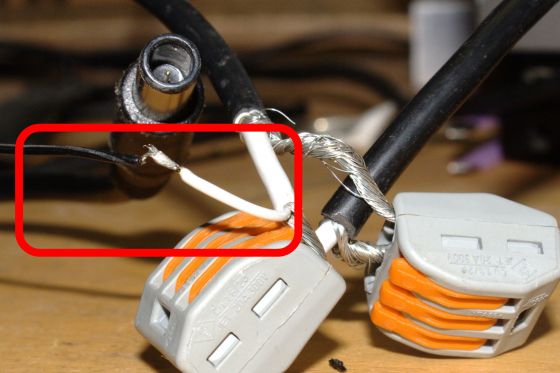
The overall image of the power and data lines combined looks like this. Since the data line is exposed from the thin pin in the center of the plug of the AC adapter, you can see that the data line is extended from there. However, this method requires you to carry two AC adapters with you.

As the next step, onny decided to disassemble the case of the genuine AC adapter.

Red, blue and black cables are connected to the base of the AC adapter, of which the blue cable is the data line.
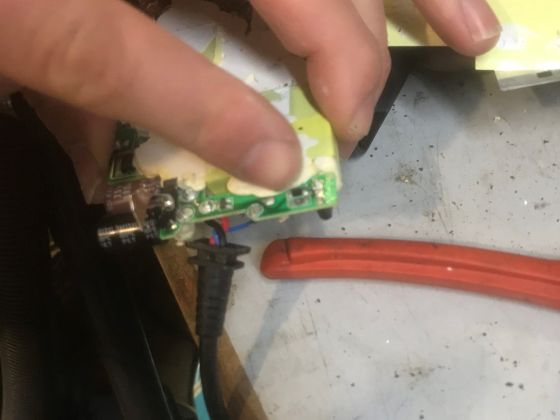
The data line was connected to a chip named 'DALLAS 2051'. Maxim chip that developed the 1-Wire protocol.

Mr. onny, who thought that it would be better to directly connect this 'DALLAS 2051' to a notebook PC, analyzed the circuit on the motherboard of the notebook PC and identified the part where the data line arrived. To solder the chip to the motherboard and send the 'signal from the genuine AC adapter' directly from the chip to the motherboard.
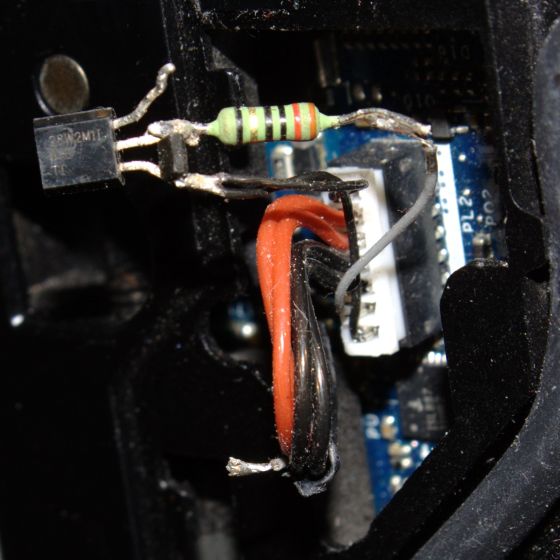
When I tried to connect the AC adapter of another manufacturer, it was successfully charged. It is said that it can be charged with any AC adapter. Onny explains that the BIOS gets information as a 'Dell genuine AC adapter' directly from the chip soldered to the laptop.

There are some points to note when a notebook PC is modified by this method. Since the chip is soldered directly and any AC adapter is recognized as the '90W AC adapter-' which is the specification of the Dell genuine AC adapter-, there is a possibility of overheating if the AC adapter of different specifications is connected. Said Onny.
Related Posts:
in Hardware, Posted by darkhorse_log



